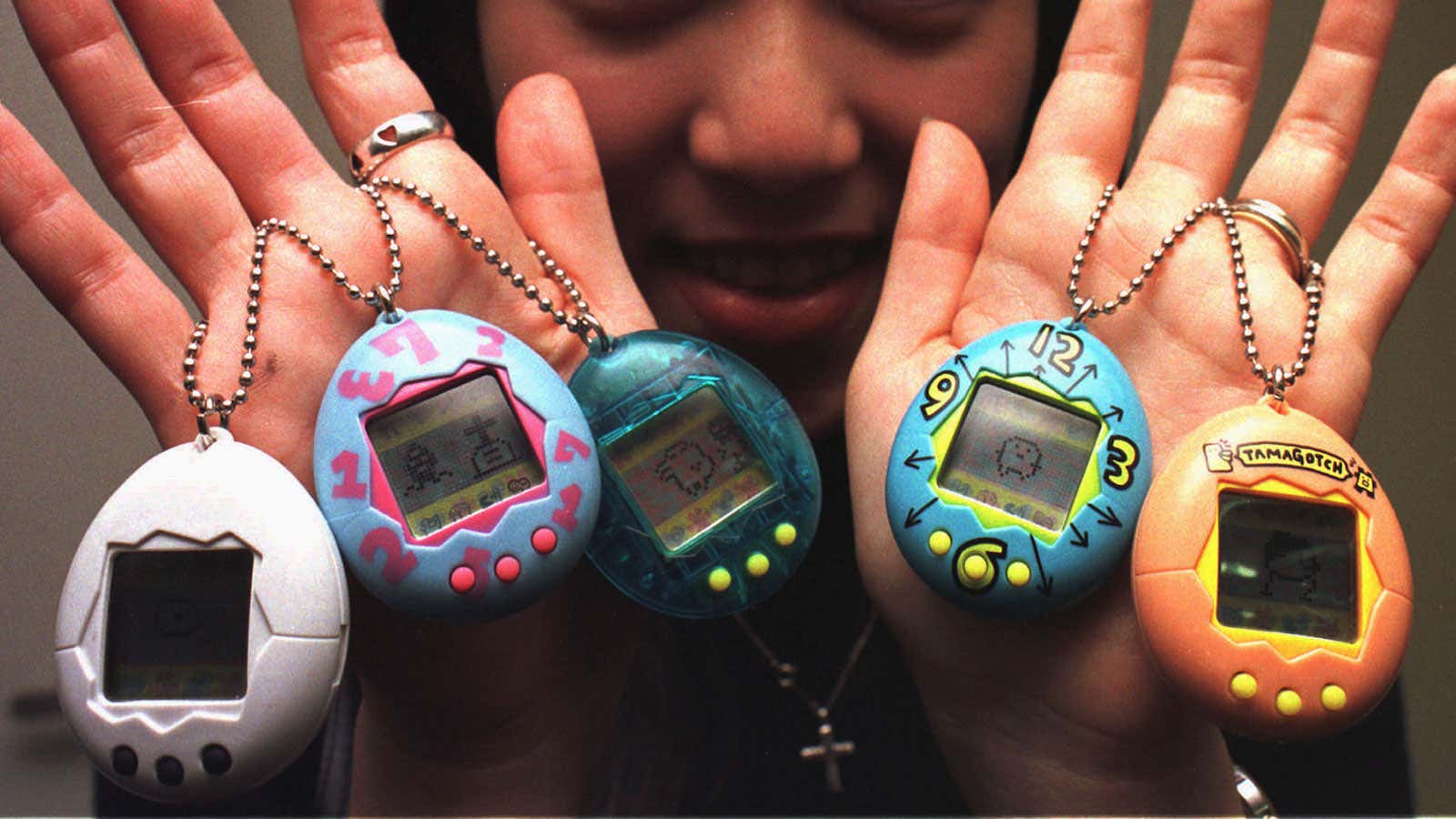It was never meant to be this way. At first we started checking on them as we waited for trains. Then we worried about them while waiting for the elevator—and then in the elevator. We checked them as we woke up and then again just before we went to bed. Then we checked them in the snatched moments in which we couldn’t sleep.
Our phones are an abusive, demanding, and needy digital entity; a Tamagotchi for the modern age. They don’t look after us—we look after them. We treat them as a living entity that we need to keep alive and grow. We nurture them and feed them with our data and power. We train them over time, their characters growing and evolving as we play games and donate our attention and love.
In this way, our devices have become a greater form of life. We carry them with us everywhere, often in cases and pouches protecting their fragility from the masses. We’re endlessly concerned with their energy levels and if they can get a signal; parts of our brains constantly yet casually look for ways to top up their charges, entering a room and subconsciously eyeing adapter cables and wall-outlet spaces. With every beep or vibration, we rush to their side. Their endless pings are a cry for attention, to be loved, to be fed with our minds and mental input.
Smartphones were designed to be that way. The notion of “captology”—design at the intersection of psychology and computer science—has never been more prevalent than in the internet we experience today. Near infinite A/B tests from software designers ensure that we can’t leave our phones alone. Apps default to notify us of every possible thing that’s happened—or, in Facebook’s case, to remind us when nothing has happened. From remarkable “news” headlines with question marks that force a click to yelps for attention from apps that have been neglected, the creature in your phone is always checking that you’re still there. As a result, the digital world is now based around the dopamine rush of a notification—the hit of the feeling that someone, somewhere, just thought about you.
Yet our love affair isn’t about the device. Our new-fangled Tamagotchi pets are more than creatures to keep alive: They’re the incarnate of our digital persona, the one we feel the need to nurture and grow. They’re a personal brand, a virtual ego, our best self, the highlight reel of the highlight reel, us on a good day—every day. Our very existence is slowly morphing into this digital entity, a whole new being to breed and support.
Life becomes gamified; a first-person video game with a precisely measured real-time updated score. We need to feel validation, to be retweeted, liked, faved, upvoted. Now we chase a different metric of success: the objective and measurable approval of engagement and followers. These empty metrics soon become the goal, not the accidental byproduct of a life worth living.
People hack the system to keep their digital personas alive, caring less about giving or living life than just maintaining the appearance of it. It starts with follow for follows, comments for attention, vacuous questions to boost engagement. Facing a battle to keep up, people turn to the dark alleys of the internet for the underhanded assistance of bots. Before long, everything is outsource to the murky world of click farms and algorithm hacks, filling our feeds with nonsensical comments, random follows, and computer-generated awkwardness, 24 hours a day.
Soon it becomes a fool’s game. Those relying on natural means soon drop behind those digitally doping. We’ve given our personality and then our meaning to computers to manage, pumping up our egos on falsities.
Yet still, we crave contact more than meaning. Each moment is penetrated by the constant interruption that comes from hosting 50 asynchronous, asinine, text-based conversations across 20 apps each day. And when we do see someone in real life, our attention moves away from those who made the time to meet us, instead prioritizing the pinging interruptions of those who didn’t.
It’s hard to remove ourselves from these devices, to look up and not down, to extract ourselves from the gateway to our other selves. Does our digital shadow reflect us, or does it reverse us? At what point will our phones support us again, making us our better selves, more informed, more richly connected?
We need to break free of our smartphone addictions—to let the battery die, along with the creature it holds inside. The first step is turning off notifications, but the next is prioritizing those physically around us. Perhaps the next stage of the modern world will be the most exciting: one where apps are designed to maximize real-life engagement, from finding sports partners to exhibitions to orchestrating random, spontaneous coffees with strangers.
But to do this, we need devices to move back to where they started: to become the enabler of a better life, rather than us trying to keep them alive.
